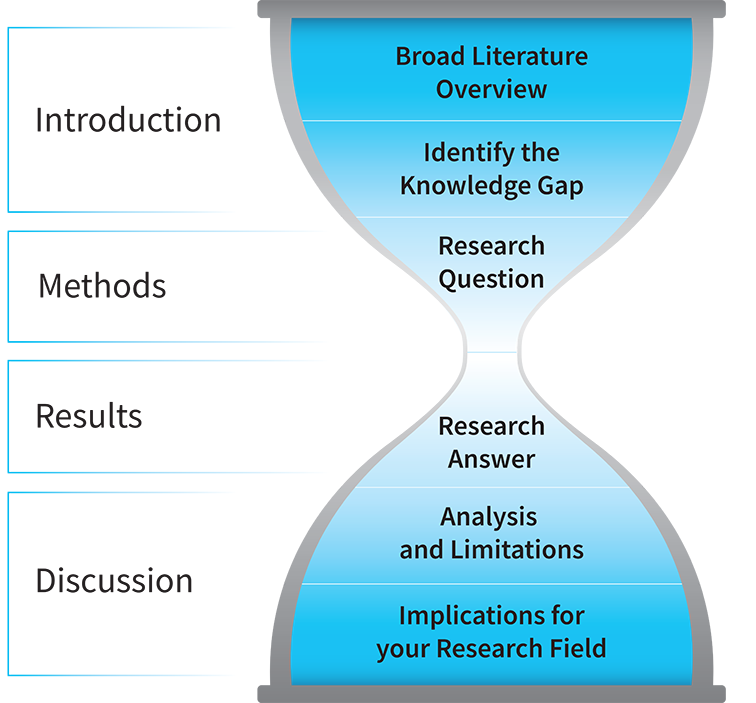Easy tips for scientific writing
The saying ‘publish or perish’ is well-known in the scientific community. Publishing journal articles is a critical part of research, yet how to write one is not often taught. Writing a research article is not as intimidating as it sounds. To help you overcome that blank page and get your study published, here are some tips on how to write a scientific paper for publication.
In this article, we will cover:
- Where to start
- Maintaining productivity
- Common mistakes

Where to start
Avoid rewriting and maximize your time and attention by writing effectively. We suggest approaching your article by picking a relevant journal, familiarizing yourself with article structure and length, and writing the sections of your article in a different order than you would read them.
Picking a journal
Knowing your audience before you write your first word can save a lot of hassle. Which journals have published other papers in your field? Select a few which have published articles of similar impact to your findings. Understand each journal’s publication process. Check the ‘prospective authors’ section on their websites and check for length, formatting, and language requirements.
Structure
Scientific articles are structured to guide the reader through your research. The IMRaD structure determines what you write, while the Hourglass structure details the depth and specificity of your writing.
IMRaD stands for Introduction, Methods, Results, and Discussion. This structure is used universally - particularly by science and medical writers. IMRaD poses four questions: why did you start, what did you do, what did you find, and what does it mean? By answering these questions, your article will communicate the rationale for your research and allow for easy replication by others in your field.

The Hourglass structure, or knowledge funnel, determines the level of detail in each section. Begin with a literature review and broad questions on the topic before identifying the knowledge gap you intend to address. Narrow down to the specific question, methods, and results of your study. Finally, end by discussing your findings and their implications for the field.
Length
How long should your article be? The answer is ‘long enough to communicate the necessary information, and not so long that you lose clarity’. Fortunately, the science behind science writing has determined the average length of each section for published articles (1, 2).
- Abstract: 1 paragraph, 250 words, usually no references.
- Introduction: 3 paragraphs, 400 words (although some journals may restrict this to <350), and 5-10 references.
- Methods: 10 paragraphs, 750 words, and 5-15 references.
- Results: 9 paragraphs, 1000 words, and usually no references.
- Discussion: 8 paragraphs, 1500 words, and 10-20 references (some of which may have appeared previously in the article).
Most modern articles use a Supplementary Material section to ensure that only critical information is presented in the main article.
Don’t write in order
Surprisingly, writing your paper in the order it is read is not the easiest approach. Instead, start by writing what you know first-hand, then review the literature and supporting studies. Successful authors from Elsevier and SPIE, to Nature, suggest tackling it in this order:
1. Main Statement
Nailing your main statement - or vision statement - means condensing your research down into the take-home message of your article. Keep your main statement in mind as you write, and ensure that each section tells part of the story necessary to support it.
2. Figures and Tables
These are the main draw of your article. Are you displaying your data the right way? How will you show comparisons or statistical significance? Figures draw the eye more than blocks of text. Get these right first, and the rest of the article should form around them.
3. Methods, Results, and Discussion
Beginning with your methods should naturally lead to your results and discussion. Cover your population, protocols, analysis, and results before linking back to the original question posed by your research. End your discussion by evaluating the limitations of your study and how your results relate to current literature.
4. Conclusion
The final paragraph of your discussion should summarize the significance of your research and emphasize the main statement of your article.
5. Introduction
Writing your introduction after the discussion ensures all the information required to understand the study is present. You should have developed a comprehensive understanding of the surrounding literature in the process of completing your research. Review the literature surrounding your topic and identify the knowledge gap for your reader. How does your study fill that gap?
6. Abstract and Title
Keep your abstract and title short and informative. Writing these last will make them more accurate, as the story of your article may change while writing it.
7. References and Keywords
Manage your references easily with software like EndNote or Zotero. Use the reference style preferred by the journal you are submitting to. Ensure the right readers can find your article by selecting keywords for online publication databases. Test keywords by searching among already published papers. Does it return similar articles to your own?

Writing productively
Staying on task is the bane of writers everywhere - even outside of science.
When and where
Organizing a dedicated time and space to write will help you focus on your writing. Setting up a routine can keep you in the zone for longer periods. Find out if your organization has regular writing groups, or start one! Not only do they improve science writing productivity, but they also provide a great sense of support for science writers (3).
Make it easy for yourself
Everyone gets distracted. Turn off your notifications for email and social media. Mute your phone, block out your calendar and let your colleagues know that this is your focus time. Removing distractions and preventing yourself from multi-tasking can be one of the most impactful habits for improving your productivity. When you think of something you want to do - that isn’t writing your paper! - keep a notebook handy to jot it down for later. These activities can be rewards for productive writing sessions.
Set realistic goals for each writing session. Start with small chunks of writing. If you’ve already planned what you will write before you sit down to do it, you are more likely to achieve that goal.
There is no ‘one right way’
Whether you like to plan out every point in advance or just write as much as you can in one sitting, ignoring spelling and style for editing later, there is no one right way to write. Find the way to get words on the screen which works best for you.

Common mistakes
Here are some common mistakes first-time authors make when writing a scientific paper.
Correct English
Unfortunately, the scientific community is biased toward papers published in English (4). English papers have more citations than their non-English counterparts, which might be due to the reach of English journals. Before submitting your article for review, ensure your English is correct. Recruit your colleagues to proofread your paper. A fresh set of eyes might see something you’ve missed.
Correct language is about more than just using the right words. It also encompasses syntax, readability, and style. This includes keeping sentences simple, avoiding passive voice, and dropping descriptive language in favor of repeating empirical terms. These elements can weaken otherwise excellent science - don’t let them undermine yours! If in doubt, some journals offer an English correction service before publication, which can help bring your writing up to publication standards.
Editing and formatting
While you can leave the editing until last - don’t let looking up exact details slow you down if you are on a roll - it should never be forgotten. If you have multiple co-authors or proofreaders, track changes made to the first draft using the tracking feature in software like Microsoft Word or Google Docs. This way, you won’t lose any detail between edits or struggle with version control.
Formatting is an art. Don’t forget that the first audience you are writing for is the journal editor, and a good layout can prevent early rejection. Once you’ve got everything on paper, it is important to check your article for correctness and consistency. Double-check the formatting guides for the journals you wish to submit to - some journals may have specific requirements around abbreviations, for example.
As a general rule, write your paper in double-spaced 12-point font, with page margins of 3 cm. You may also want to number your pages and rows of text for ease of editing by your journal reviewer. Ensure that your text, figures, and captions are consistent and your references haven’t changed between drafts.
Ethics
Referencing is foundational to research. All scientific papers build on the work of others; however, you must be sure to cite your references correctly to avoid plagiarism.
Publish and prosper
Your research is not finished until it’s communicated. Don’t be paralyzed by a blank page - get your research published.
Connecting with clinicians: Tips for translating your research to clinical practice »
5 easy tips for connecting your scientific research with the public »
Publishing Research: How to successfully share your scientific research with the world! »
Helpful Resources
- Araújo, Claudio Gil Soares de. “Detailing the Writing of Scientific Manuscripts: 25–30 Paragraphs.” Arquivos Brasileiros de Cardiologia, 2014. Crossref, https://doi.org/10.5935/abc.20140019.
- Heßler, Nicole, et al. “Empirical Analysis of the Text Structure of Original Research Articles in Medical Journals.” PLOS ONE, edited by Omid Beiki, vol. 15, no. 10, 2020, p. e0240288. Crossref, https://doi.org/10.1371/journal.pone.0240288.
- Kwan, Patchareeya P., et al. “Faculty Writing Groups: The Impact of Protected Writing Time and Group Support.” International Journal of Educational Research Open, vol. 2, 2021, p. 100100. Crossref, https://doi.org/10.1016/j.ijedro.2021.100100.
- Bitetti, Mario S. di, and Julián A. Ferreras. “Publish (in English) or Perish: The Effect on Citation Rate of Using Languages Other than English in Scientific Publications.” Ambio, vol. 46, no. 1, 2016, pp. 121–27. Crossref, https://doi.org/10.1007/s13280-016-0820-7.
